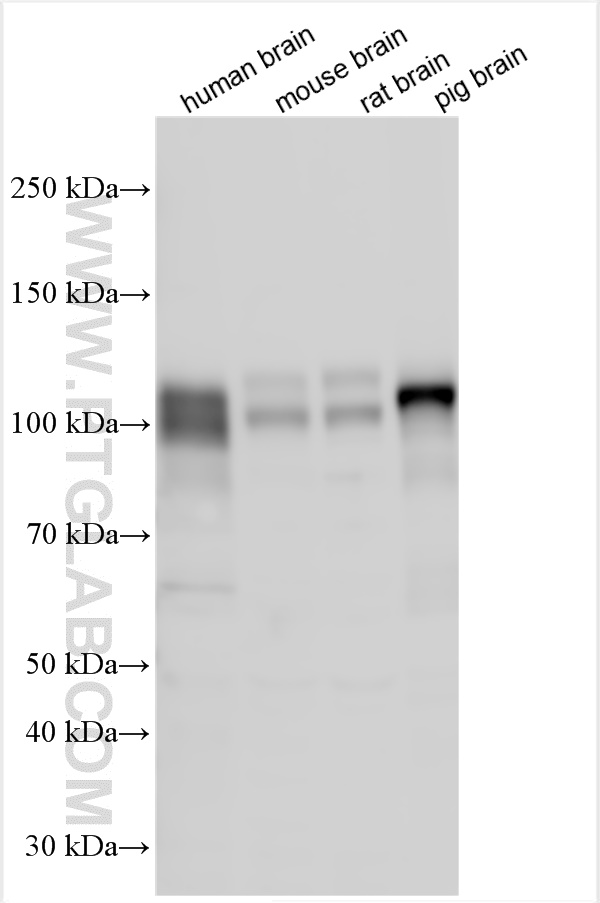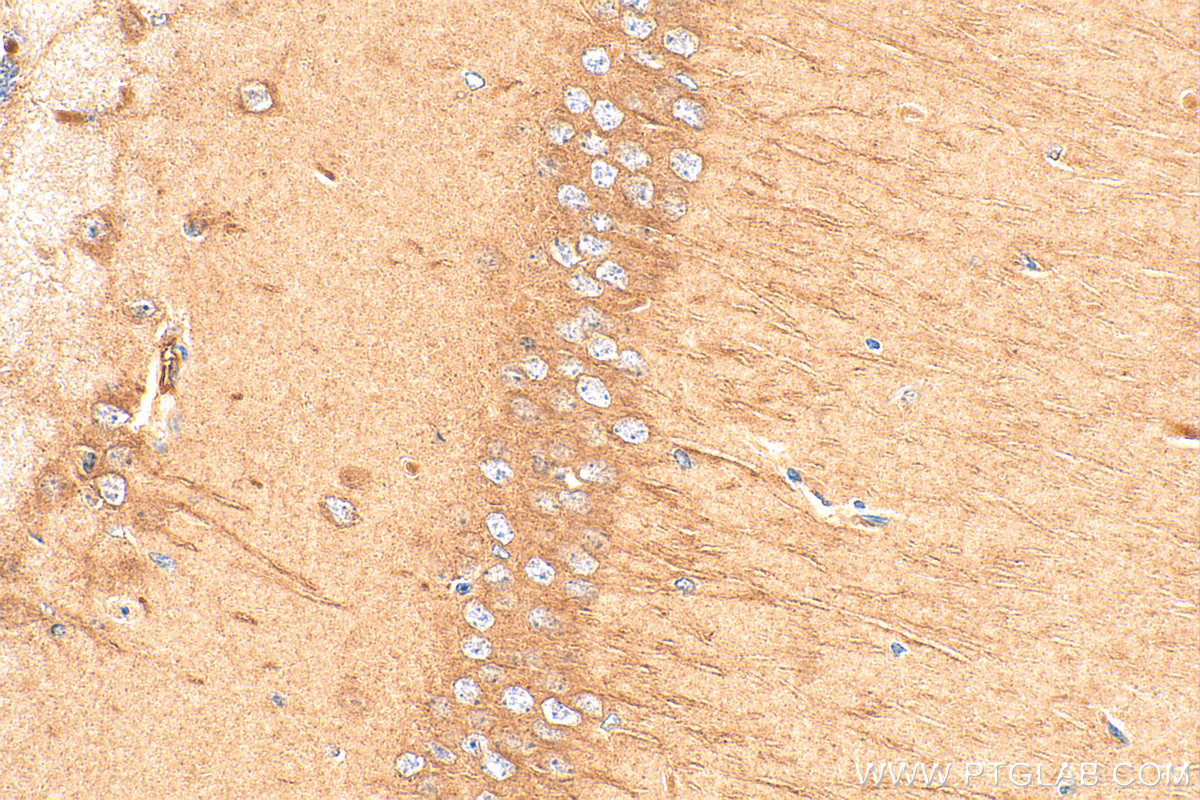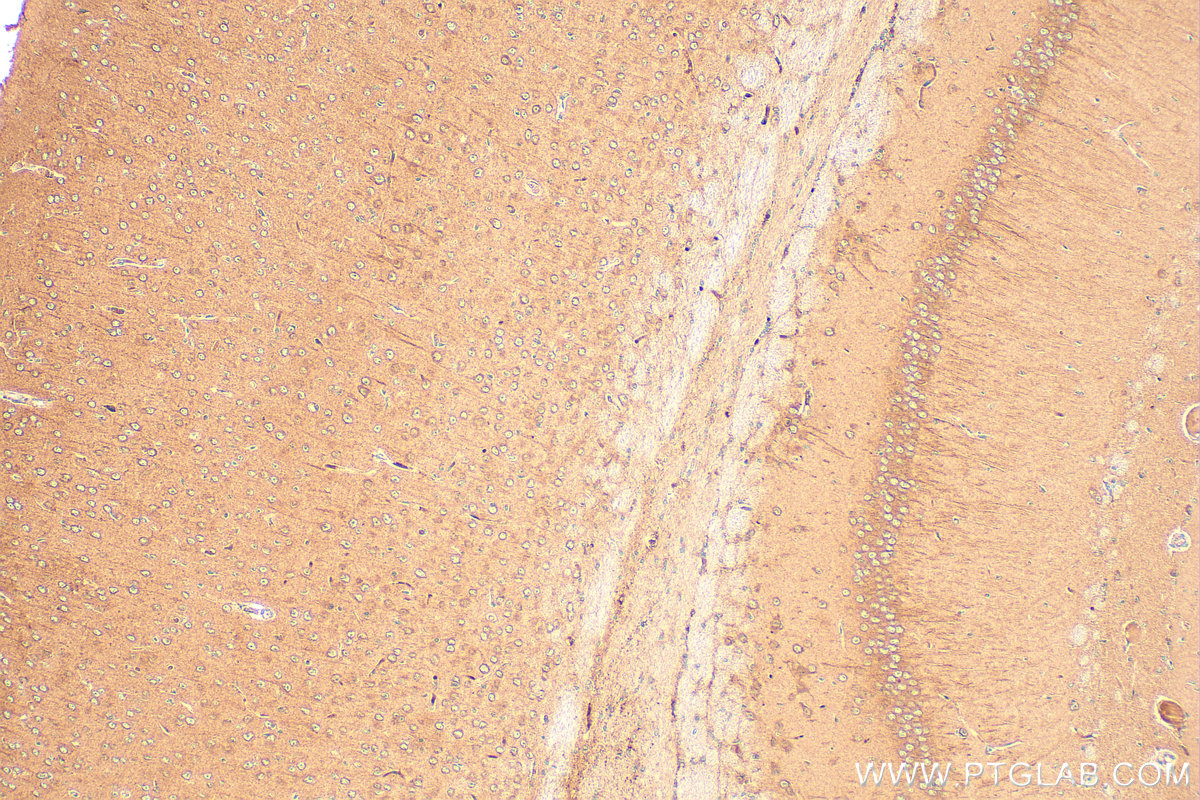验证数据展示
经过测试的应用
| Positive WB detected in | human brain tissue, mouse brain tissue, rat brain tissue, pig brain tissue |
| Positive IHC detected in | mouse brain tissue Note: suggested antigen retrieval with TE buffer pH 9.0; (*) Alternatively, antigen retrieval may be performed with citrate buffer pH 6.0 |
推荐稀释比
| 应用 | 推荐稀释比 |
|---|---|
| Western Blot (WB) | WB : 1:500-1:1000 |
| Immunohistochemistry (IHC) | IHC : 1:50-1:500 |
| It is recommended that this reagent should be titrated in each testing system to obtain optimal results. | |
| Sample-dependent, Check data in validation data gallery. | |
产品信息
27278-1-AP targets NLGN4X in WB, IHC, ELISA applications and shows reactivity with human, mouse, rat, pig samples.
| 经测试应用 | WB, IHC, ELISA Application Description |
| 经测试反应性 | human, mouse, rat, pig |
| 免疫原 |
CatNo: Ag2426 Product name: Recombinant human NLGN4X protein Source: e coli.-derived, PGEX-4T Tag: GST Domain: 469-816 aa of BC034018 Sequence: FYAFYHHCQSEMKPSWADSAHGDEVPYVFGIPMIGPTELFSCNFSKNDVMLSAVVMTYWTNFAKTGDPNQPVPQDTKFIHTKPNRFEEVAWSKYNPKDQLYLHIGLKPRVRDHYRATKVAFWLELVPHLHNLNEIFQYVSTTTKVPPPDMTSFPYGTRRSPAKIWPTTKRPAITPANNPKHSKDPHKTGPEDTTVLIETKRDYSTELSVTIAVGASLLFLNILAFAALYYKKDKRRHETHRRPSPQRNTTNDIAHIQNEEIMSLQMKQLEHDHECESLQAHDTLRLTCPPDYTLTLRRSPDDIPLMTPNTITMIPNTLTGMQPLHTFNTFSGGQNSTNLPHGHSTTRV 种属同源性预测 |
| 宿主/亚型 | Rabbit / IgG |
| 抗体类别 | Polyclonal |
| 产品类型 | Antibody |
| 全称 | neuroligin 4, X-linked |
| 别名 | ASPGX2, AUTSX2, HLNX, HNLX, neuroligin 4, X linked |
| 计算分子量 | 92 kDa |
| 观测分子量 | 90-100 kDa |
| GenBank蛋白编号 | BC034018 |
| 基因名称 | NLGN4X |
| Gene ID (NCBI) | 57502 |
| RRID | AB_3085943 |
| 偶联类型 | Unconjugated |
| 形式 | Liquid |
| 纯化方式 | Antigen affinity purification |
| UNIPROT ID | Q8N0W4 |
| 储存缓冲液 | PBS with 0.02% sodium azide and 50% glycerol, pH 7.3. |
| 储存条件 | Store at -20°C. Stable for one year after shipment. Aliquoting is unnecessary for -20oC storage. |
背景介绍
NLGN4X is a member of the type-B carboxylesterase/lipase protein family. The encoded protein belongs to a family of neuronal cell surface proteins. Members of this family may act as splice site-specific ligands for beta-neurexins and may be involved in the formation and remodeling of central nervous system synapses. The encoded protein interacts with discs large homolog 4 (DLG4). Mutations in this gene have been associated with autism and Asperger syndrome. NLGN4X has two isoforms with predicted MW's of 92 kDa and 94 kDa.
实验方案
| Product Specific Protocols | |
|---|---|
| WB protocol for NLGN4X antibody 27278-1-AP | Download protocol |
| Standard Protocols | |
|---|---|
| Click here to view our Standard Protocols |




